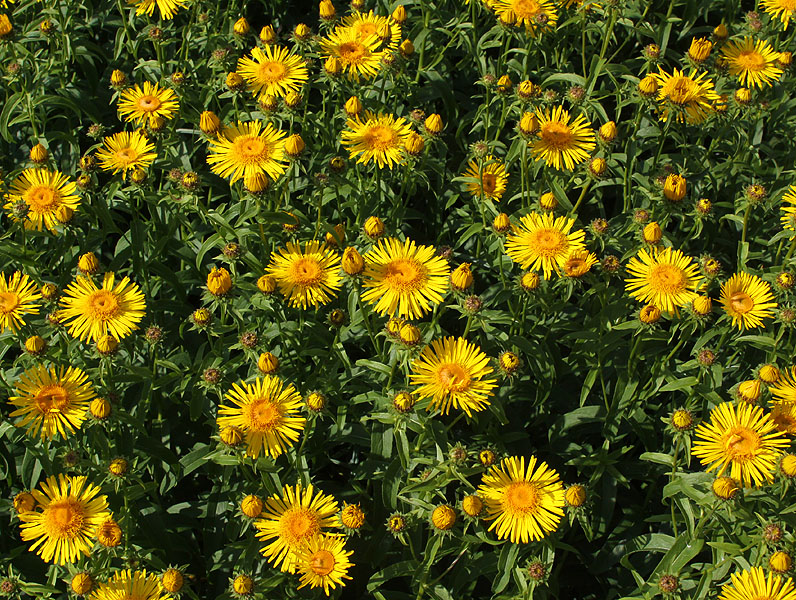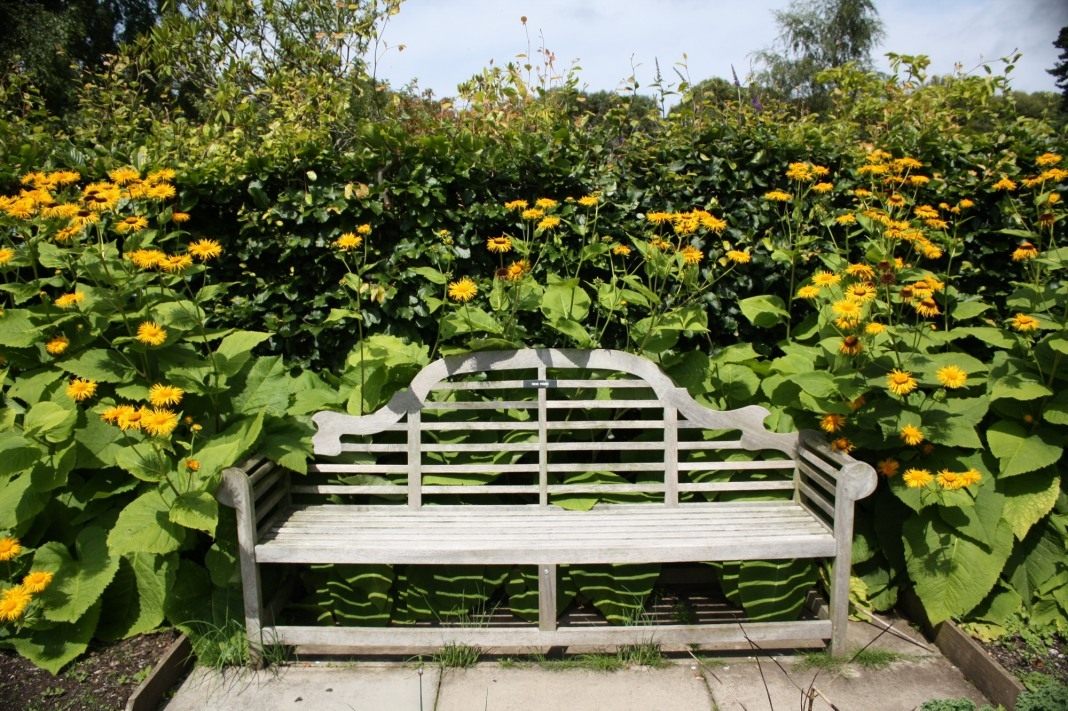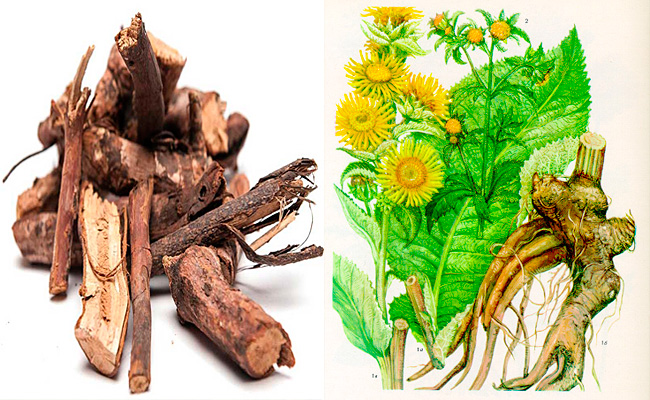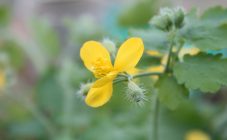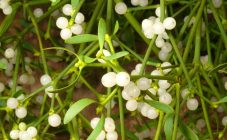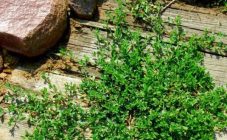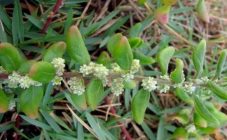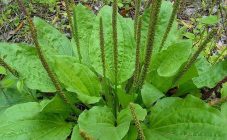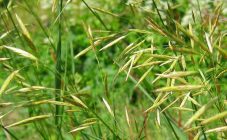Content:
Nature has given people many plants that are used for healing. One of them is elecampane, an herb that has powerful medicinal properties. Nine ailments can be healed with this flowering plant.
General information and other plant names
Traditional medicine calls the green gift of flora elecampane medicinal. This combination of words reflects the special property of the plant. Its roots become the basis for obtaining funds that are used in traditional and folk medicine. For more than one century, the common people have called grass a hencap, nine-force, divosil, meadow aman. And for the color of the flowers - wild sunflower.
Botanical characteristics of elecampane
Nine forces grass is a genus of perennials belonging to the Astrov (Compositae) family. Plants have the following parts:
- A fat and short rhizome with few processes. The root system is brown on the outside, and yellowish on the inside, all covered with small growths - containers of essential oils.
- An upright stem that can have a height of 50 to 200 cm.
- Large basal leaf blades and smaller stems. The leaves are oblong-ovoid. From above they are harsh and wrinkled, from below they are velvety, gray-green. Moreover, both leaves and peduncles are completely covered with hard whitish hairs.
- Inflorescences in the form of baskets. They are located at the ends of the shoots and form an irregular brush. The yellow flowers of aman meadows look just as beautiful as the flowers of sunflowers. But at the medicinal plant, the flowering parts are small.
- Oblong brown fruits, ripening one month after the corolla falls.
Varieties of elecampane
In nature, there are several varieties of wild sunflower.
- High elecampane. It is he who has the greatest medicinal value among all the meadow amans. The roots of high divosil are used for the manufacture of infusions and decoctions. It is not for nothing that the plant was called tall, its stems can grow up to 2.5 meters. The leaves are about 20 cm wide and 40-50 cm long. Large inflorescences reach 6-7 cm in diameter.
- Willow hencap. Its leaf blades are narrow, 12 cm long and 2-3 cm wide.The plant height is 45-80 cm.
- British hencap. Stem leaves are oblong-lanceolate, and basal leaves are elliptical. Peduncles 20-60 cm high. Flower diameter 3-4 cm.
Both professional gardeners and amateur gardeners appreciated the following varieties of aman meadow:
- Mechelist - with 1 inflorescence, basket diameter 3 cm, stem height about 45 cm, with narrow leaves. The plant blooms in mid-summer.
- Glandulosa - with several paniculate inflorescences, a basket diameter of 8 cm, a stem height of 2.5 m, with serrated leaves 70 cm long. The plant blooms in late summer.
- Hookeri - with 1 inflorescence, stem height 75 cm, oval pubescent leaves 13 cm long. The plant blooms in late summer.
- Macrocephala - with several inflorescences, stem height 1.8 m, with wide, coarse oval leaf blades of dark green color 25 cm long. The plant blooms in late summer.
- Eastern - with 1 inflorescence 3 cm in diameter, oval serrated pubescent leaves 12 cm long. The plant blooms in late summer or early autumn.
Reproduction and care of plants
In nature, a hen-tree can be found on the banks of reservoirs, forest glades, in wet meadows. It is also grown on personal plots.
The creation of certain conditions contributes to the well-being of the medicinal herb:
- constant hydration;
- being in partial shade, where the sun looks for no more than an hour;
- fertile and deeply cultivated soil.
Also, do not forget that meadow aman:
- It perfectly tolerates winters in the middle lane. Covering plants in winter is only necessary in areas where there is little snow.
- Should be fed with organic and mineral fertilizers in spring and summer.
- It has spreading leaves and considerable growth. Therefore, you need to think over the landing site so that the wonder does not interfere with the growth of neighbors.
- It is worth tying to the support. Otherwise, the stem will break in tall specimens.
Propagated by elecampane seeds and division of rhizomes. Planting is carried out both in spring and autumn. Small seeds are mixed with river sand and planted in open ground to a depth of 2-3 cm (if the soil is light) or 1-2 cm (if the soil is heavy). Plants with a height of 4-5 cm are planted from each other at a distance of about 15 cm. And when they get stronger and begin to grow in height, they are transplanted again. In this case, a distance of 60 cm is left between the seedlings. Do not forget that young plants require regular weeding, otherwise the weeds will slow down their growth.
In the first year, a rosette of basal leaves will form in the wild sunflower, the stem will rise 30-40 cm in height. And in the second year the plant will grow and bloom.
The use of elecampane as a medicine
Gardeners plant elecampane grass because they know what it helps from. Rhizomes are used to prepare medicinal potions with a bitter-spicy taste and a peculiar aroma.
Small cysts of various organs disappear if the tincture is taken orally in combination with traditional medicines. An ointment made from crushed roots of Divosila with melted lard literally lifts you to your feet with pain in the lower back. The broth is used as a tonic, antihelminthic, antiulcer, anti-inflammatory and choleretic drug. And diseases of the respiratory system are treated with medicines and tincture of aman meadow.
Contraindications for the use of nine-strength products can be:
- serious problems with the heart and blood vessels;
- pregnancy and breastfeeding;
- stomach diseases;
- the presence of hormonal changes in women during menopause or severe pain during menstruation.
Rules for collecting and storing herbs
The collection of medicinal raw materials begins in the fall at the time of the appearance of fruits. The dug rhizomes are washed, thin and damaged roots are cut off. The remaining parts are cut lengthwise into pieces and put to dry.
It continues until the roots break when bent. In order for the nine forces the herb does not lose its medicinal properties, certain rules must be followed.
An elecampane not only heals diseases, but also decorates any area. A person, admiring it, is relieved of stress. Some people claim that observing the growth and flowering of wild sunflowers has helped them cope with depression.
